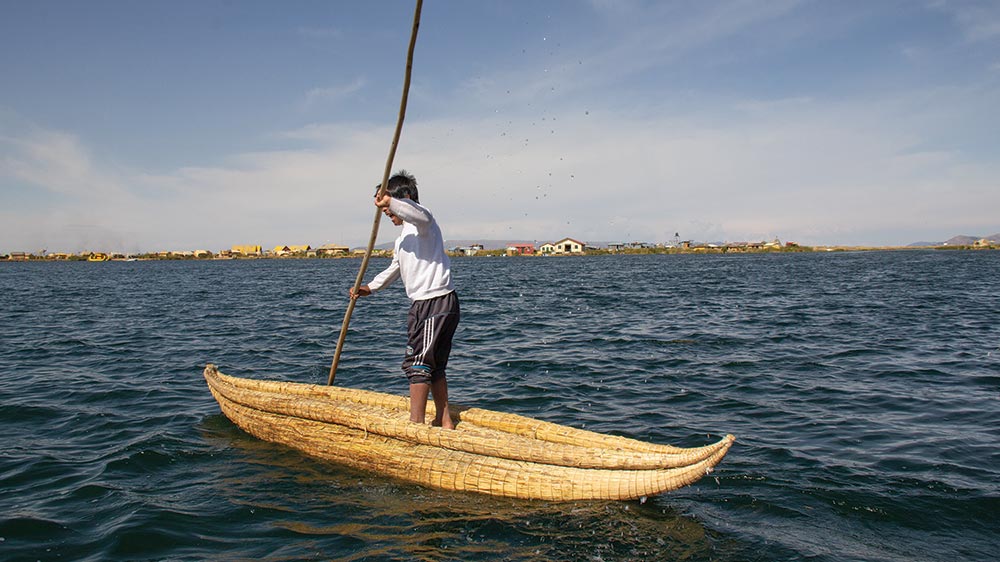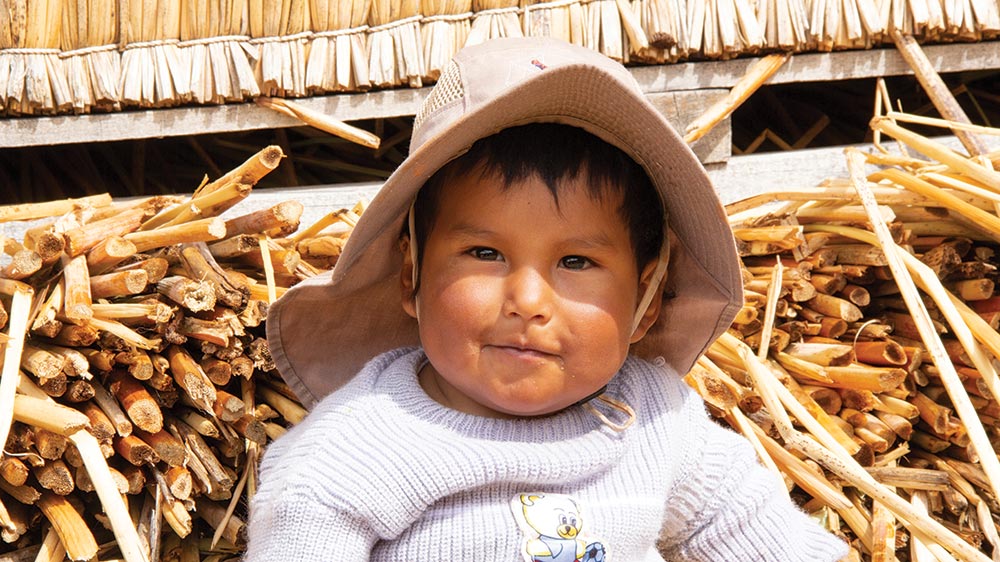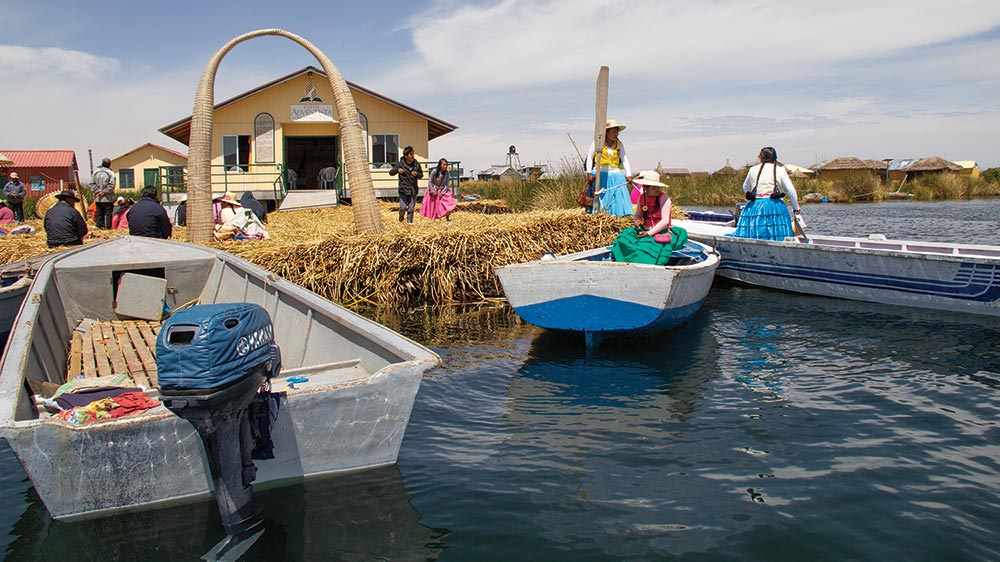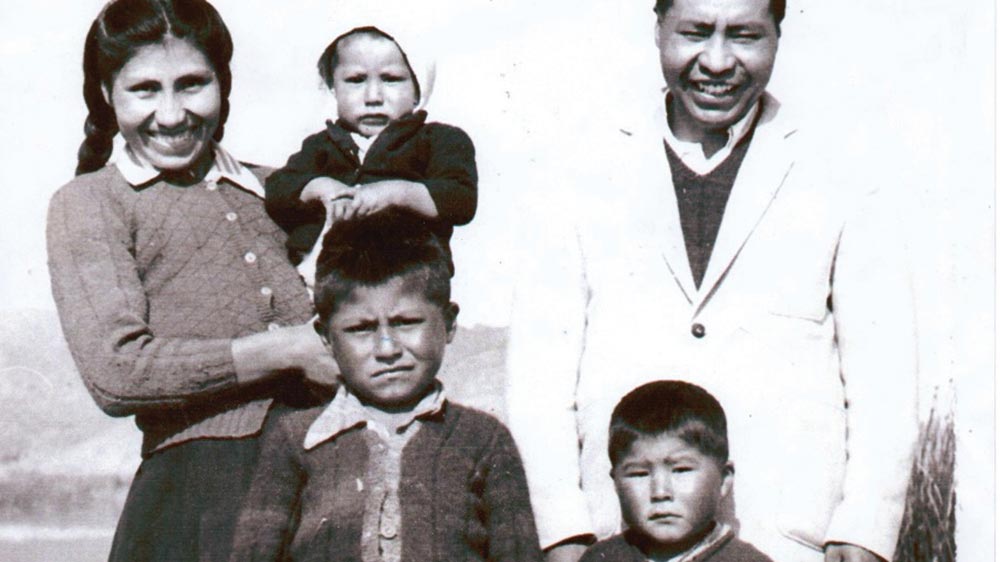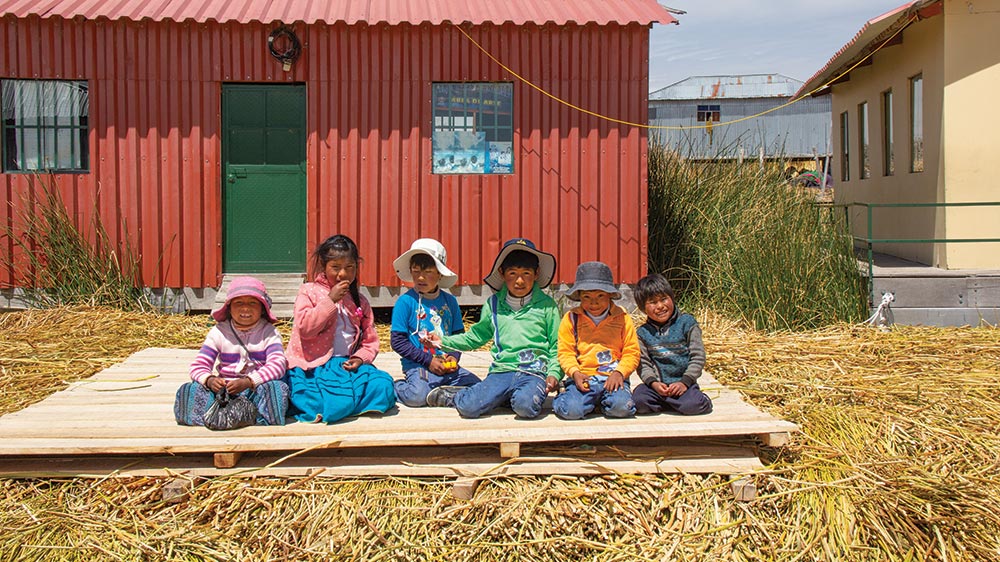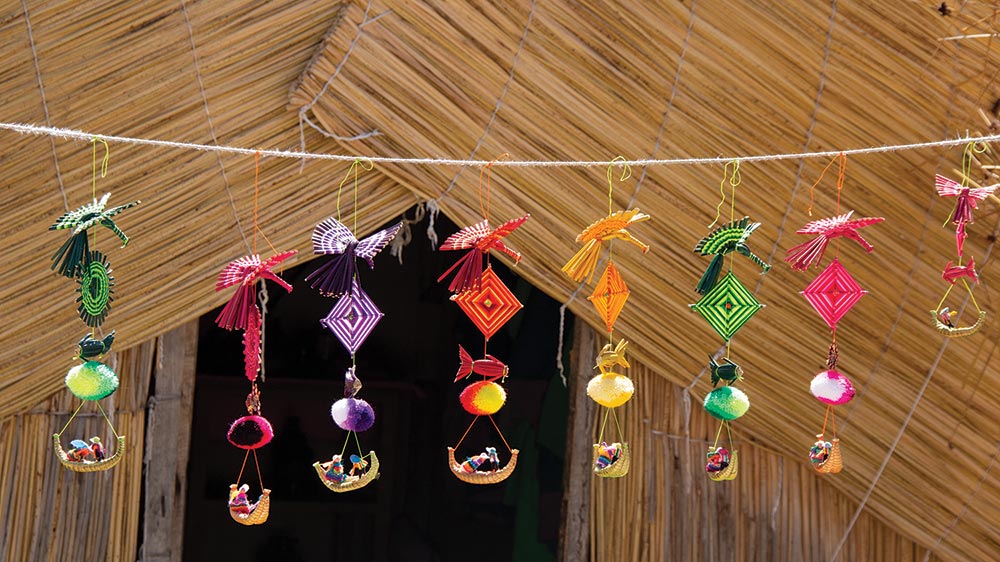How would you like to live on a floating island? For hundreds of years, the Uros people of Peru have done just that on Lake Titicaca.
They make their floating islands from naturally buoyant totora reeds, which grow in the shallow areas of the lake. First, they cut blocks of the roots and tie them together to form a platform that will serve as the island’s base.
Next, they tie the platform to poles and drive the poles into the lake’s bottom so the island won’t float away.
Crisscrossed layers of dried totora reeds are then laid on top of the root base to form a walking surface. Because the layers closest to the roots are immersed in water, they rot quickly, so new layers must frequently be added. Reeds are harvested and laid out everywhere to dry so they are ready to supply the need for repairs. The reed surface is spongy and uneven. And when walking around the island, you must pay attention because there is nothing to keep you from falling over the edge into the cold water!
At any given time, there are between 70 and 120 islands on the lake. Most are about 50 feet long by 50 feet wide and house two or three families. If well maintained, they can last 30 years.
The Uros depend upon the totora reeds for survival. They also use them for fuel and medicine and to create their homes, sleeping mats, boats, furniture, and the crafts they sell to tourists. They even eat the tender shoots!
A number of the Uros people are Seventh-day Adventists, and on Sabbath mornings they make their way by motorboat to their floating church. During the week, their children study at a floating school.
But Uros children didn’t always have an Adventist school to attend. In 1958, Wellesley and Evelyn Muir, Adventist missionaries in Peru, traveled to the floating islands. They noticed that the Uros lacked medical care, education, and proper food and clothing, and they lived in constant fear of evil spirits. The Muirs’ hearts were touched, and they felt God calling them to help.
A local young Adventist man named Carlos Velasquez served as the Muir’s translator, helping them create Bible studies to share the gospel with the Uros. When they started the first school in the area, Mr. Velasquez became the teacher!
When Mr. Velasquez was a boy, he loved to climb a big mountain near his home. When he reached the top, he would look across the bay at the floating islands and wonder what kind of people lived there. Someday, he thought, I will visit those people that no one seems to know much about.
Little did he dream that his wish would come true. His father wanted him to become a witch doctor, but God had other plans for Mr. Velasquez. He lived with the Uros on their floating islands for 14 years and helped lead many of them to Jesus.
Mission offerings made the work of Wellesley and Evelyn Muir and Mr. Velasquez possible long ago. Today, your mission offerings are urgently needed to share the gospel with those who haven’t had an opportunity to hear it and provide health care and education to those who desperately need them.
Please give generously and regularly to the mission offering to make a difference in people’s lives all around the world. You can give your offerings during Sabbath School, by scanning this QR code with your phone’s camera, or by visiting adventistmission.org/donate.






